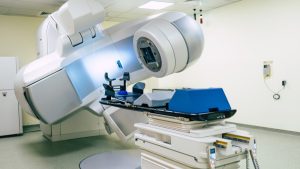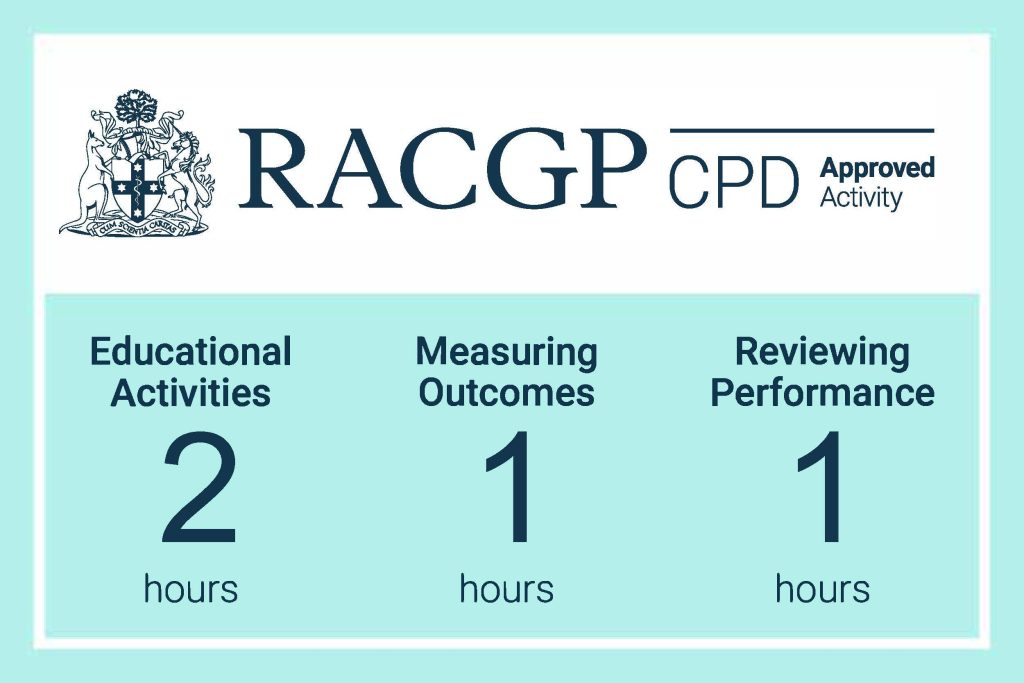Articles / Clinical update: the most common & most hidden eating disorder

Psychological interventions are a key first-line treatment for binge eating disorder, and in certain cases should be prioritised before weight loss, says Dr Vash Singh, psychiatrist and founding director of the Esus Centre, Australia’s first integrated eating disorder day hospital.
Despite being the most common eating disorder, binge eating disorder (BED) is often stigmatised and misinterpreted, and can be the “deepest secret” of a patient.
Here are practical tips for how to assess, understand and manage a patient who may have binge eating disorder.
About 2.2% of the population have binge eating disorder, however Dr Singh says it’s often undiagnosed for more than a decade, if diagnosed at all.
Patients experience stigma and extreme shame, and often conceal their binges.
“They have very, very strong feelings of shame, guilt and self-loathing, especially after a binge episode and feel extremely distressed and sad and hopeless because usually they have been struggling with this eating disorder for an average of more than 10 years when they present,” Dr Singh says.
Unlike other eating disorders like anorexia nervosa and bulimia nervosa – in which females account for about 80% and 70% of cases, respectively - a similar ratio of men and women are estimated to experience binge eating disorder.
“People with binge eating disorder have a more equal male to female predominance, with about 1.6 females to one male, so not even double,” Dr Singh says.
However as with anorexia and bulimia, far less men with binge eating disorder present to treatment, in part because of the stigma.
According to the DSM-V, binge eating disorder is characterised by recurrent episodes of bingeing which involves eating a larger amount of food than most people could eat in a short period of time and is associated with a loss of control of eating. A key difference from bulimia is that there’s no compensatory behaviour such as purging, fasting, laxative use or overexercising. To meet the criteria for a disorder, binges must occur on average at least once a week for three months. The more frequently binge episodes occur, the more severe the disorder. One to three per week is classed as mild, four to seven as moderate, and more than seven as severe.
Eating a bit too much is not a binge; a binge involves consuming objectively large amounts of food.
“If we have a big dinner at Christmas time, that is not a binge. If we go through a drive through after work and we order two Big Macs, two large chips, a large shake, some nuggets on the side, as well as an ice cream, that would be more than most people could eat. And if we eat it on the way home in half an hour in the car, that would fulfil criteria for a binge,” Dr Singh explains.
The feeling that one cannot stop eating or control how much they are eating is also an important feature. People who’ve had bariatric surgery and can’t physically consume large amounts typically have a pattern of grazing throughout the day, with a sense of loss of control, Dr Singh adds.
There is a strong genetic component, and family history is a risk factor – with environmental factors such as stress and trauma also contributing.
For example, bingeing can be a way to cope with emotional distress.
Social pressure around body image can also lead to dieting—which in turn leads to binging.
“Dieting is the single most important precipitant factor in binge eating disorder,” Dr Singh says.
People get caught in a cycle where low self-esteem leads to restrictive eating and weight loss, which does help them feel better temporarily—but ultimately they succumb to cravings, feel like they’ve failed, binge and return to low self-esteem, she explains. Once they are in that cycle, it’s very difficult to get out.
There is now level one evidence that calorie restriction slows down metabolism, increases the circulating hunger hormone ghrelin and decreases the satiety hormone leptin. This then results in an increased preoccupation with food and a decreased activity in the reward centre of the brain when we eat. So while dieting can lead to short-term weight loss, these biological drivers work against long term weight-loss—our brains tell us we’re in famine mode to help us survive.
“So it will slow down our metabolism to a snail’s pace. So when we eat anything at all, our bodies will hold on to it. And it will also drive us to eat because it thinks, well, you’re in a time of famine,” Dr Singh explains.
“Two years after a diet, 95% of people have regained the weight they’ve lost and 40% have gained even more,” Dr Singh says.
Patients with BED often have significant fluctuations in weight with a long-term trend of weight gain. They might also report gastrointestinal issues, and/or non-specific physical symptoms such as feeling tired or lack of sleep. Psychological symptoms are especially common — 94% have a comorbid psychiatric condition, most commonly depression and anxiety.
Dr Singh says they will likely have a preoccupation with food and body shape, and are often very sensitive about weight-related issues.
“They are very, very sensitive to comments about food, dieting, exercise or body image. So when you ask them to step on the scales, that’s usually the most scary thing. And a lot of people won’t actually come to GPs for a really long time because they are really afraid of being asked to step on scales.”
These fears can, in part, be mitigated within the GP setting by blind weighing patients when weights are necessary.
“They tend to have a distorted body image and extreme dissatisfaction with their body shape and very low self-esteem, depression, anxiety or irritability,” Dr Singh explains.
Hypertension, hypercholesterolemia and high triglycerides and diabetes are also common.
Given the levels of shame people experience about their binge eating, it’s not uncommon for them to underestimate how much they consume. Framing the conversations sensitively can help.
“I tend to say things like, ‘there’s nothing that you can say in regards to your bingeing that I haven’t heard before’… and I might give them an example that’s really extreme in terms of what a binge could look like so that it normalises it for them,” says Dr Singh.
She recommends asking:
The Binge Eating Disorder Screener-7 is a free screening tool based on the DSM-V criteria, but needs to be confirmed by more thorough clinical assessment by a GP or an eating disorder clinician.
BED is best managed by a team that includes a GP, an eating disorder psychologist and a dietitian, with a psychiatrist in certain circumstances, such as managing comorbid psychiatric conditions or when medication is indicated for BED (e.g. when psychological and dietetic interventions are not effective).
First line treatments for BED are psychological.
They include:
“It is very important to treat the comorbid psychological issues. We do actually have to improve their relationship with food,” Dr Singh says.
Managing patients with medical problems related to weight, where dieting is the trigger for their eating disorder, presents a challenging dilemma.
People are more likely to seek treatment for weight loss than for eating disorders.
In fact, up to 70 percent of people with obesity and comorbid eating disorders seek weight loss treatments, but only 25 percent have seen a mental health professional.
“The weight almost always gets prioritised over the eating disorder and I think it’s because there’s been an under-recognition and underdiagnosis of it within GP practice,” Dr Singh says. “There’s also the pressure that the patients put their doctors under, because for the patients the priority is the weight loss.”
But timing of interventions depends on the severity of BED and the urgency of weight loss, Dr Singh explains.
For people with a BMI less than about 35 with moderate to severe BED, she treats the eating disorder first, before weight loss.
“Anything above seven episodes per week, or where the bingeing is daily, we would say the eating disorder would have to be managed first, because without managing that we are going to compromise any attempts to lose weight,” Dr Singh explains.
“These patients have to be managed differently. We are not aiming to lose the maximum amount of weight in the shortest amount of time, because that would entail restriction, and restriction is what triggers that urge to binge. It has to be done very carefully and very slowly.”
In cases of morbid obesity requiring immediate weight loss intervention for medical reasons, Dr Singh says psychological treatments should be integrated concurrently.
Medications may be appropriate for patients with moderate to severe BED as an adjunct to psychological and dietary treatments.
They may also be appropriate in mild cases, if first-line psychological interventions have been explored.
Dr Singh says pharmacological treatment targets aim to lower eating impulsivity and treat any anxiety and depression.
Antidepressants - Modest effect on binge eating, but no effect on weight.
Lisdexamfetamine dimesilate (Vyvanse) – Licensed in Australia for moderate to severe binge eating disorder, but it is not on the PBS for binge eating disorder. Must be initiated by a psychiatrist but may then be continued by GP.
“The number needed to treat for one person to benefit is three, so it’s quite effective,” says Dr Singh. “It induces a remission of the binge eating, but it only results in a modest weight loss, which is five to six percent.”
GLP-1 agonists – Early research shows promising results on both binge eating and weight loss, but the studies are in their infancy.

Menopausal Hormone Therapy - What Dose of Estrogen is Best?

Cardiovascular Benefits of GLP1s – New Evidence

Oral Contraceptive Pill in Teens

RSV and the Heart


Modified but kept in place
Eliminated entirely without replacement
Maintained as is
Completely replaced with an alternative system
Listen to expert interviews.
Click to open in a new tab
Browse the latest articles from Healthed.
Once you confirm you’ve read this article you can complete a Patient Case Review to earn 0.5 hours CPD in the Reviewing Performance (RP) category.
Select ‘Confirm & learn‘ when you have read this article in its entirety and you will be taken to begin your Patient Case Review.
Menopause and MHT
Multiple sclerosis vs antibody disease
Using SGLT2 to reduce cardiovascular death in T2D
Peripheral arterial disease
